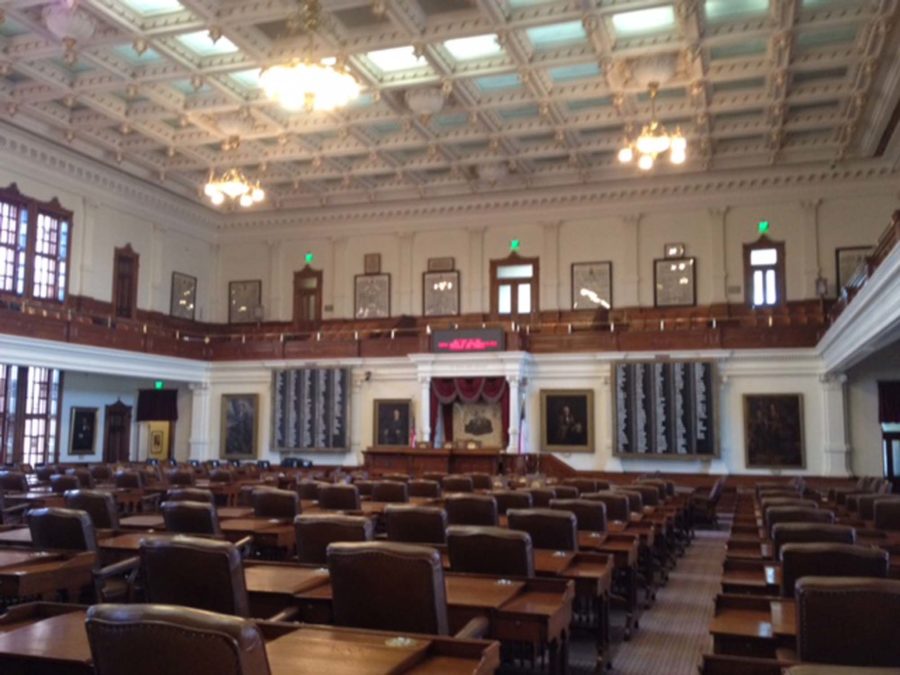Texas school funding unlikely to increase
State legislators in Austin are currently debating a bill that would partially tie teacher pay to student performance.
January 12, 2015
School funding has been a widespread issue in Texas in recent years, demonstrated by the Texas court ruling in 2014 that state finance for education was unconstitutional after more than 600 school districts sued the state. The 84th legislative session, which starts Monday, is an important one for school districts hoping to increase their funds.
“We will monitor legislative action closely as our state funding is affected by decisions that will be made during the sessions,” superintendent Ted Moore said in a letter to the district. “Lovejoy ISD has not fared well during the 82nd and 83rd sessions as we have lost more than $3 million in state funding.”
Many districts cite all-time-low SAT scores, poor STAAR scores, and increasingly oversized classrooms as results of frequent cuts in school funding. In addition, Texas is currently ranked the 46th state in terms of per-student spending.
“If you look at how much we spend per child, it is really sad that Texas is funding public education at a level that is significantly lower than the average for the country,” Raise Your Hand Texas chief executive David Anthony said to the Dallas News in January. “Money is not the only answer. It takes more than that to improve schools. But it is certainly a significant part of the solution.”
While many districts will be requesting increases in school finances at the upcoming legislative session, the state has appealed to the Texas Supreme Court regarding the 2014 decision that current funding is unconstitutional. Because of this and the desire for tax reductions, lawmakers claim that it is unlikely that any major revisions will occur during this session.
“We will do small fixes within the present system and possibly put some additional money in,” House Public Education Committee Chairman Jimmie Don Aycock said to the Dallas News in January. “Beyond that, any bigger decisions will wait until we see what the Supreme Court does.”
As a result of House Bill 5 in 2014, school finances are allotted to each district based on attendance rates. According to the district it loses approximately $50 in state funds every time a student is absent.
“Funding is based on student enrollment,” principal Chris Mayfield said. “When kids show up to school, that’s how the state determines how much funding you get. Then what it falls to in each individual school district is, how do we spend that money? So every school gets a little bit different amount of money per kid.”
Funding based on attendance is a new policy for the state, and new decisions must be made by district administrations on how to budget with less money.
“As funding levels have changed, school districts have to figure out how to provide students with a level of facilities, teachers, books, the whole thing,” Mayfield said. “And because those numbers are different, it’s a challenge, and it really goes community by community on where they decide how dollars are best spent. Are they best spent in staff? Or are they spent on facilities?”
The district is one of many that has to work within the restraints of a new budget. In recent years Mayfield and district administrators have worked with the school board, legislators, and other districts to share concerns about funds.
“We tend to cut places that we call farther away from the classroom,” Mayfield said. “We look at places like administration or support people that work outside of maybe the high school or one of the schools, so maybe central administration. This year we have one less assistant principal than we had last year. So instead of changing the classroom experience for kids, we try to make those cuts further and further away from the classroom so that you have the best experience you can have.”
While the district has had to make difficult decisions, like cutting staff and ending the K-7 Spanish program, administrators will try to keep the impacts of the budget shortfall as far from the classroom as possible.
“I think one of the things that is incredibly important to remember is that really our students are our youth, our future,” Mayfield said. “I don’t think there’s a better investment that can be made financially for our state than education of its young people. It always has to be a priority for the state that when they do think about funding, they want to make sure that the kids get the education that they need. Because these are the people who are going to be our working force, our doctors, lawyers, teachers, and business people.”



